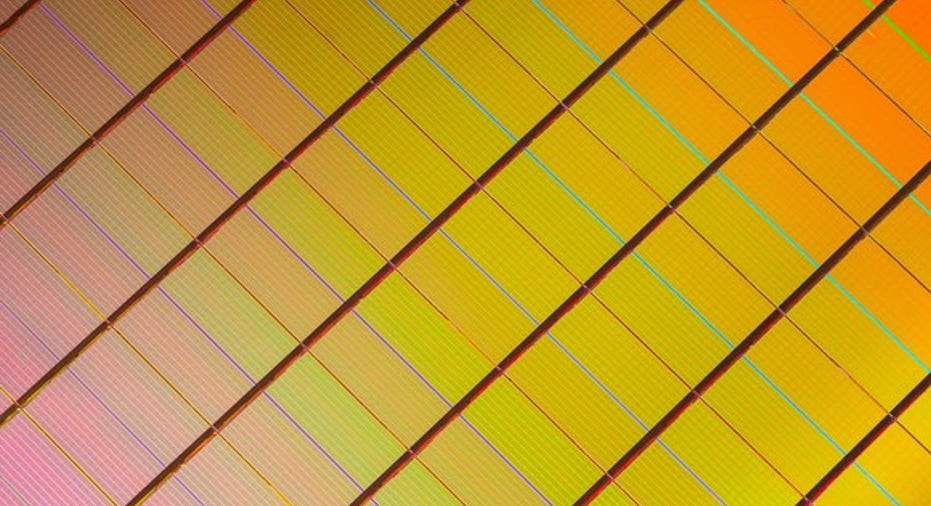The Strange Relationship Between Intel Corporation and Micron Technologies, Inc.

A wafer of 3D XPoint memory. Image source: Intel and Micron.
Microprocessor giant Intel has spent a good deal of time talking up non-volatile memory as one of its key future growth drivers as it strives to diversify beyond chips for personal computers.
In fact, Intel seems to be so convinced that non-volatile memory technologies such as NAND flash and 3D XPoint are critical to its future, that it's even spending around $1.5 billion to convert its logic manufacturing plant in China to a non-volatile memory fab.
However, it's worth noting that Intel isn't exactly going at it alone in memory. The company does significant joint development with memory specialist Micron . Here's why this might get in the way of Intel's plans to use memory technology as a key differentiator.
Micron sells memory to anybody who will pay
Intel and Micron share the same fundamental memory technology; as I understand it, both companies have the ability to produce and sell the types of non-volatile memory that they've developed jointly. This includes both the 3D NAND technology as well as the all-new 3D XPoint technology that both companies have been quite vocal about over the last year or so.
Intel can certainly build products around both of these technologies. For example, Intel has built high-performance solid state drives for the enterprise and workstation markets based on commodity NAND flash for years. However, the key points of differentiation for Intel's solid state drives haven't been the underlying media, but in the other aspects of the drive such as the controller, firmware, and so on.
What this suggests, then, is that Intel won't be able to keep some of these technologies -- particularly 3D XPoint -- to itself. Micron will surely build drives around these memory technologies and will likely be competing directly with Intel in the marketplace. Micron could also sell the raw 3D NAND/3D XPoint media to other companies (as it does with NAND today) that will then go and build their own competing drives around the technologies.
How does memory become a differentiator for Intel?
At the end of the day, it's hard to see how non-volatile memory can truly become a differentiator for Intel as long as both Intel and Micron have the rights to manufacture and sell the same fundamental non-volatile memory technologies.
Intel can of course continue doing what it has done previously: building high-performance data-center-oriented solid state drives and selling them. However, if Intel intends to do what it has always done vis-a-vis non-volatile memory, it's not totally clear why the chipmaker is making big bets in both non-volatile memory capacity with its own factories as well as in research and development effort.
At its next investor meeting in November, I hope that Intel goes into some detail about its longer-term strategy around non-volatile memory and further clarifies its relationship with Micron. Intel building its own non-volatile memory factories should allow it to cut Micron out, potentially helping to boost Intel's margins on 3D NAND/3D XPoint, but the precise impact isn't clear yet.
The article The Strange Relationship Between Intel Corporation and Micron Technologies, Inc. originally appeared on Fool.com.
Ashraf Eassa owns shares of Intel. The Motley Fool recommends Intel. Try any of our Foolish newsletter services free for 30 days. We Fools may not all hold the same opinions, but we all believe that considering a diverse range of insights makes us better investors. The Motley Fool has a disclosure policy.
Copyright 1995 - 2016 The Motley Fool, LLC. All rights reserved. The Motley Fool has a disclosure policy.